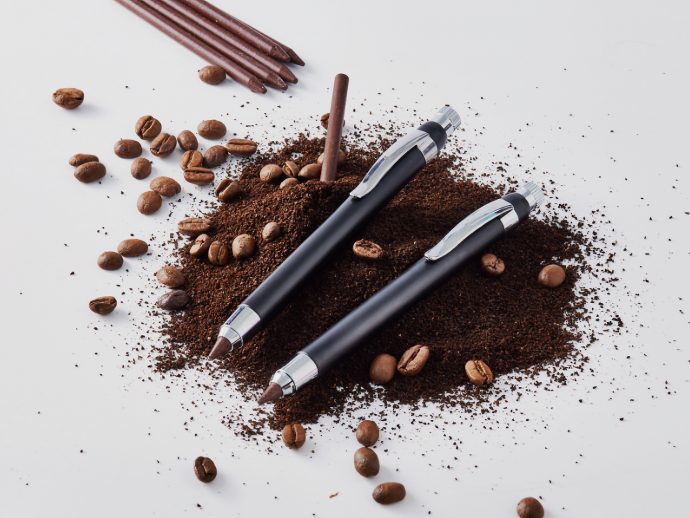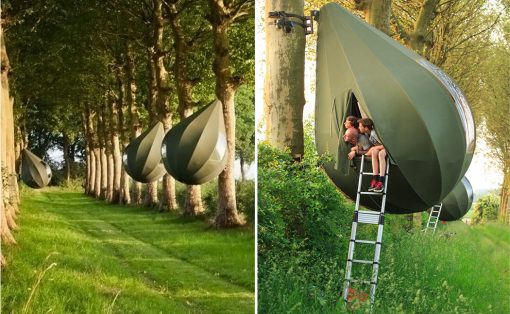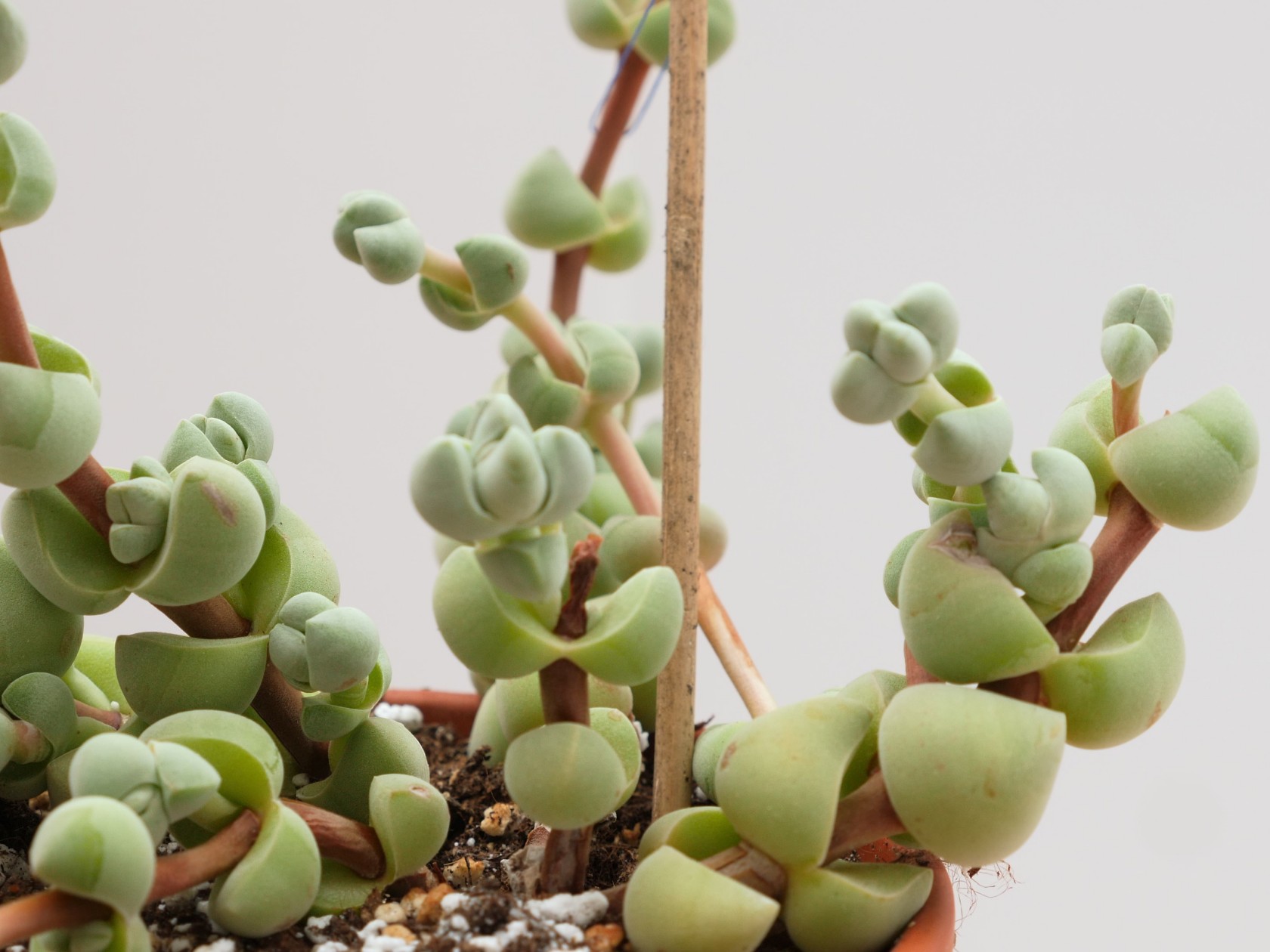
Introducing a touch of nature into your home not only enhances its beauty but also elevates the atmosphere with positivity. If you’re in search of attractive and low-maintenance plants, then nothing beats the beauty of indoor succulents. These delightful additions not only bring visual appeal but also contribute to a serene and inviting ambiance.
Image courtesy of: BlackBoxGuild
What are Succulents?
Succulents, known for storing water in their leaves, often have thick foliage, though the thickness varies among species. They thrive in dry climates and dislike high humidity. Proper watering is key for growth and flowering, as they can withstand drought by using stored water and nutrients but may rot if overwatered. Most prefer warmth and can’t survive freezing temperatures, which can lead to damage or decay. While some tolerate freezing to an extent, they still prefer warmth. Changes in temperature, water, or sunlight can alter their color, with some “blushing” or changing hues in response to increased sunlight.
1. Jade Plant (crassula ovata)
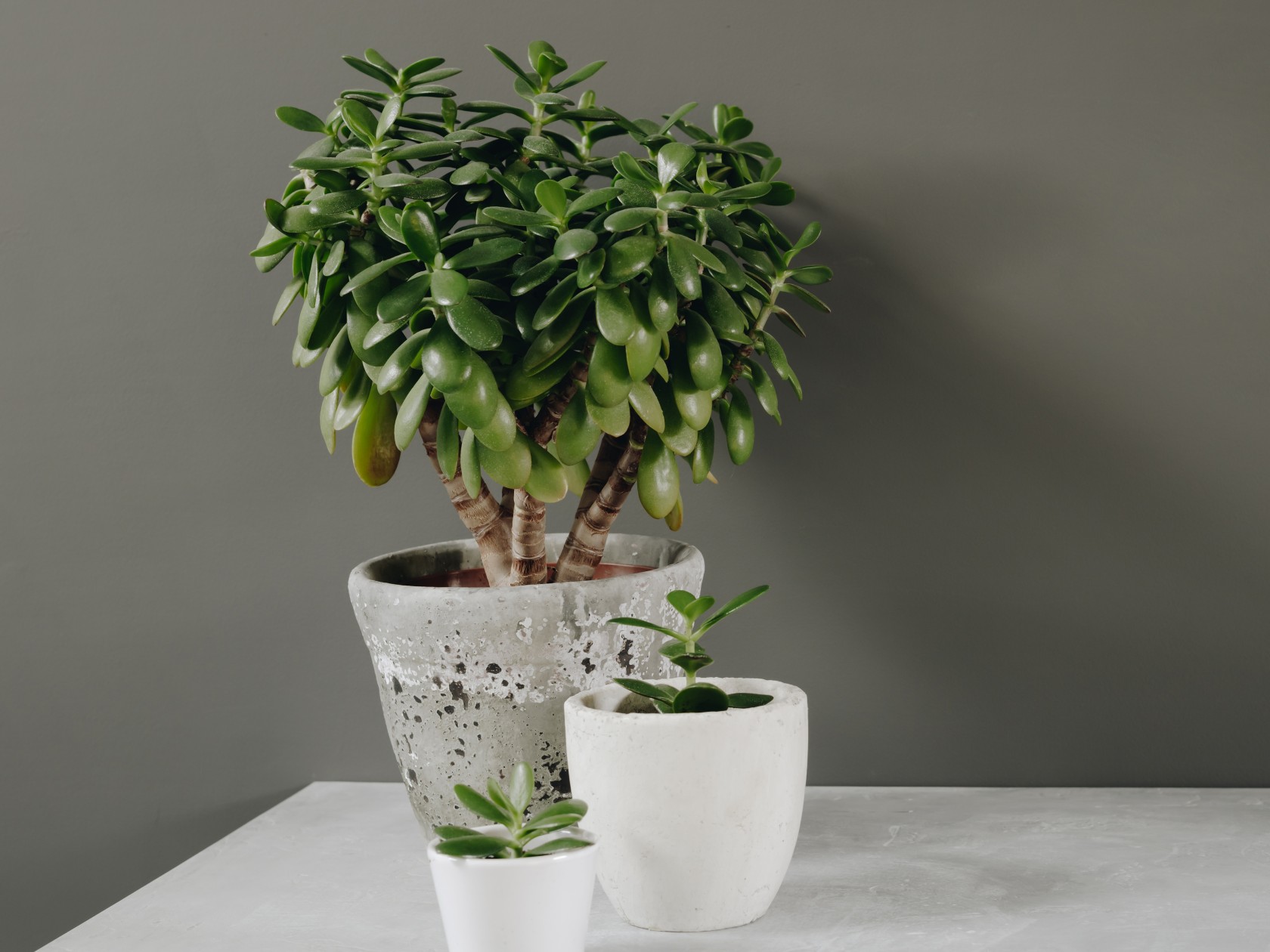
Image courtesy of: klenova
Like a bonsai, the jade plant features a thick trunk and branch structure resembling a miniature tree. Its glossy, dark green leaves grow oval, with some varieties displaying a reddish tint at the leaf tips. Under suitable conditions, mature jade plants may bloom beautiful white or pink star-shaped flowers.
2. Aloe Vera (Aloe barbadensis Miller)

Image courtesy of: Olivier_Le_Moal
Aloe vera is a must-have for anyone wanting a succulent in their garden, thanks to its rich history in traditional medicine, beauty, and nutrition. Even if you’re not into medicinal herbs, you can still benefit from aloe vera’s widespread availability. Plus, it’s low-maintenance—just avoid overwatering for a healthy plant.
3. Snake Plant (Dracaena Trifasciata)
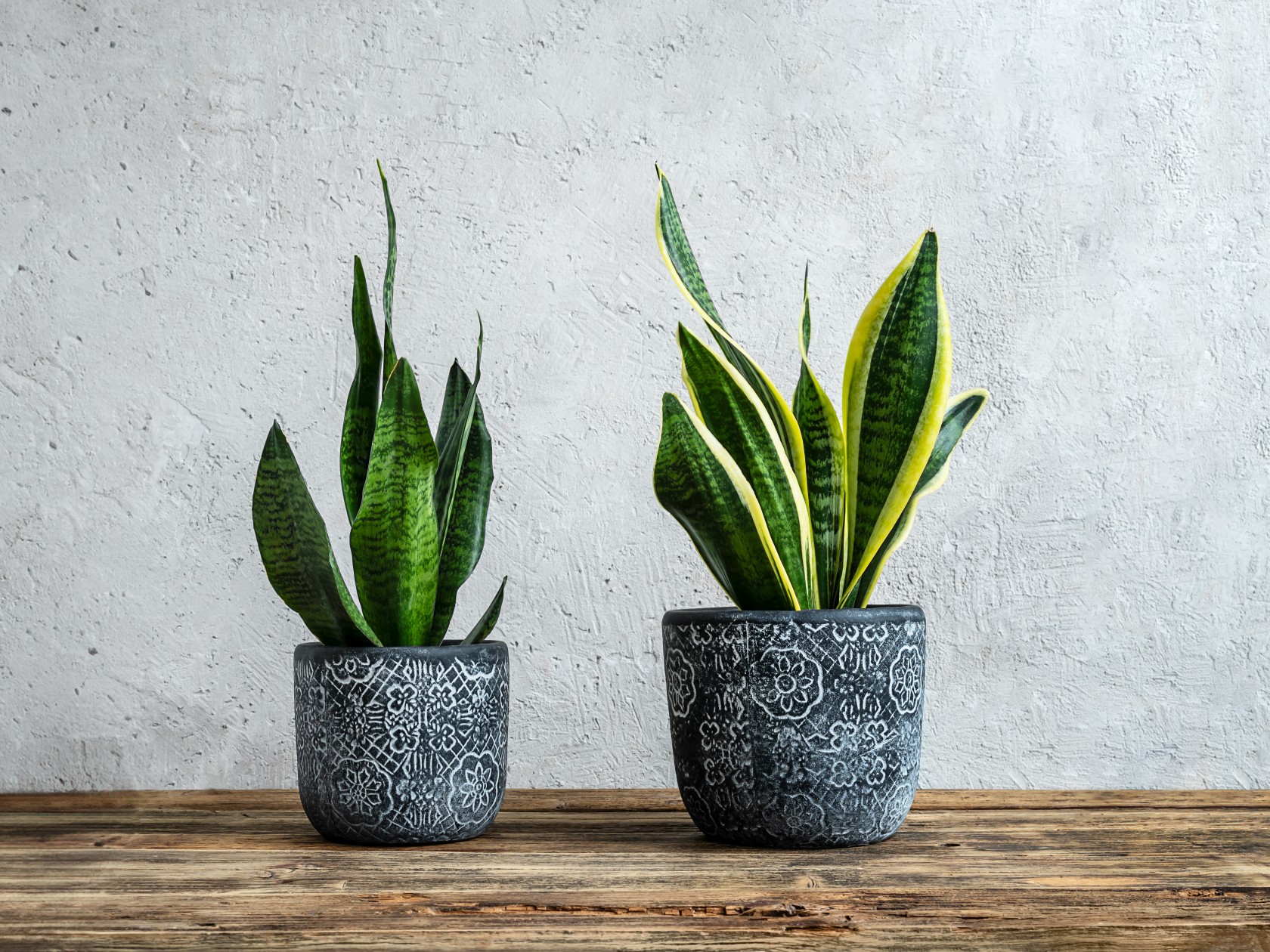
Image courtesy of: tsableaux
Snake Plants, classified as succulents, are adept at water retention despite their upright leaves. To prevent yellowing or wilting, refrain from overwatering and only hydrate them when the soil is dry.
4. Burro’s Tail (Sedum Morganianum)
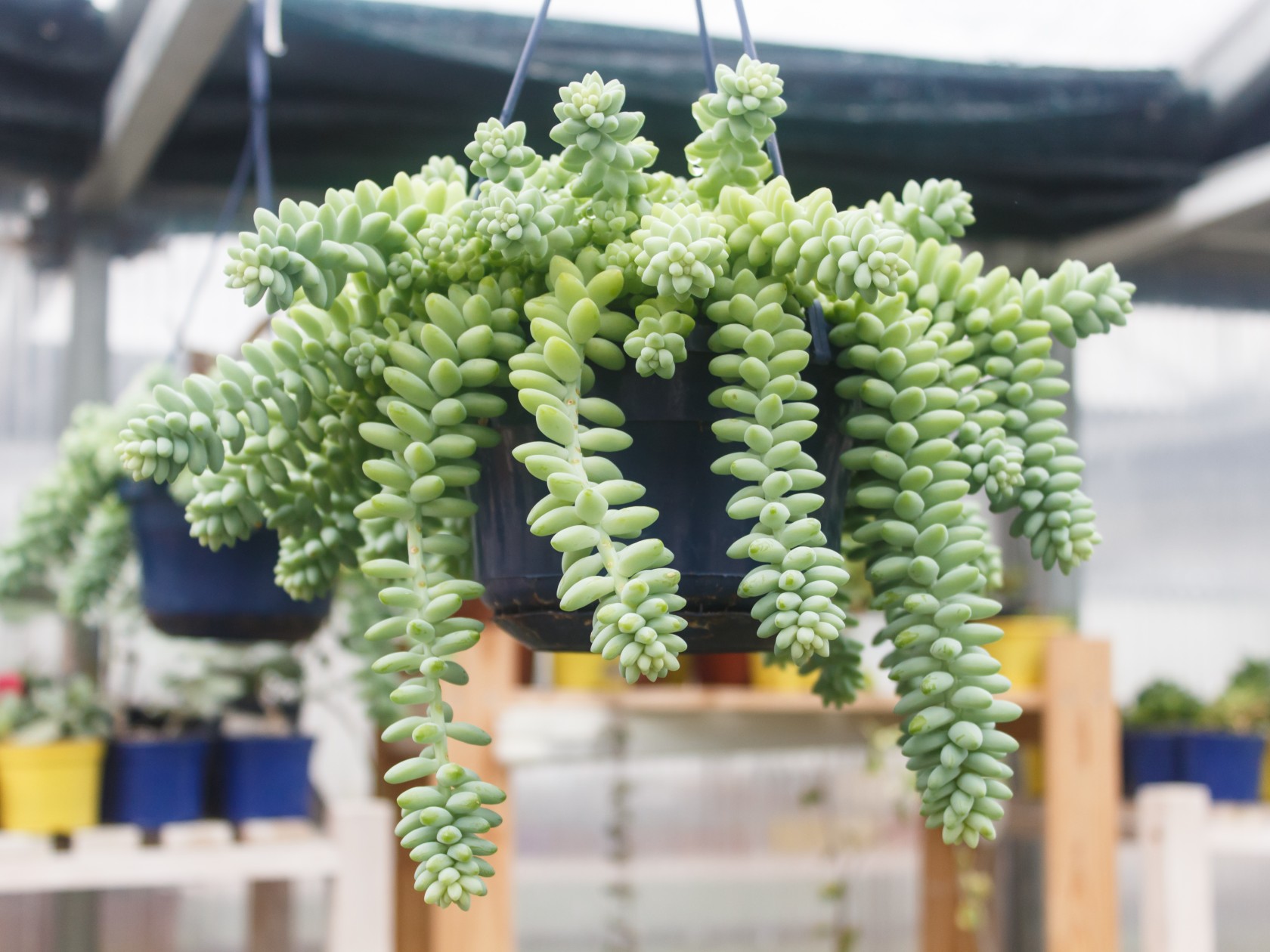
Image courtesy of: uladzimirz
The donkey tail plant, also known as Sedum morganianum, is easy to grow and care for, making it a popular choice for beginners. Being a cactus, it is easy to care for—just place it in a well-draining pot and water occasionally.
5. Zebra Plant (Fasciated Haworthia)

Image courtesy of: Farknot
The zebra plant looks beautiful with its striking white or silvery bands on lush green leaves. Its thick, fleshy foliage makes it highly adaptable to different conditions, making it an excellent choice for any environment. Just ensure it gets plenty of bright light, whether from a bulb or the sun, making it perfect for indoor gardens.
6. Whale’s Tongue Agave (Agave ovatifolia)

Image courtesy of: ClaireLuci
The striking appearance of the Whale’s Tongue Agave makes it an interesting addition to any garden. Make a note that it can grow to be up to five feet tall and six feet wide.
7. Zebra haworthia’s (Haworthia fasciata)
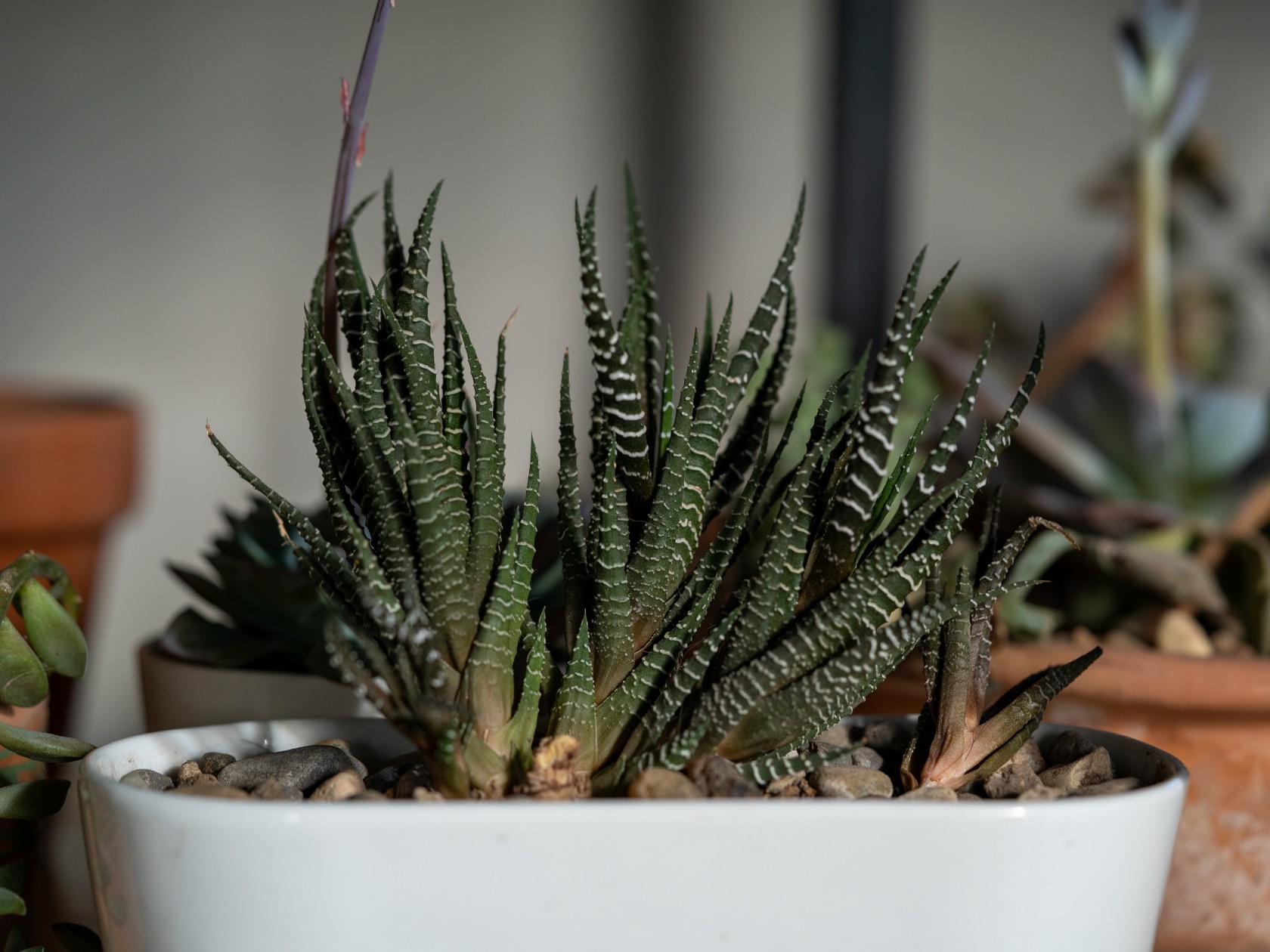
Image courtesy of: wirestock
Zebra haworthia, with its striking stripes and spiky foliage, may appear rare, but it’s readily available at garden centers and easy to care for. Just place it near a window for a few hours of bright, indirect light daily, and let the soil dry completely between waterings. It’s also perfect for terrariums or growing alongside other succulents because of its small size.
8. Panda Plant (Kalanchoe tomentosa)

Panda plants, native to Madagascar, have fuzzy gray-green leaves with soft, silvery hairs and brown or rust-colored spots at the tips. They grow slowly, reaching about 2 feet tall indoors. It is recommended to provide bright light near a window and allow the soil to dry between waterings, being careful not to wet the leaves to prevent rot.
9. African Milk Tree (Euphorbia trigona)
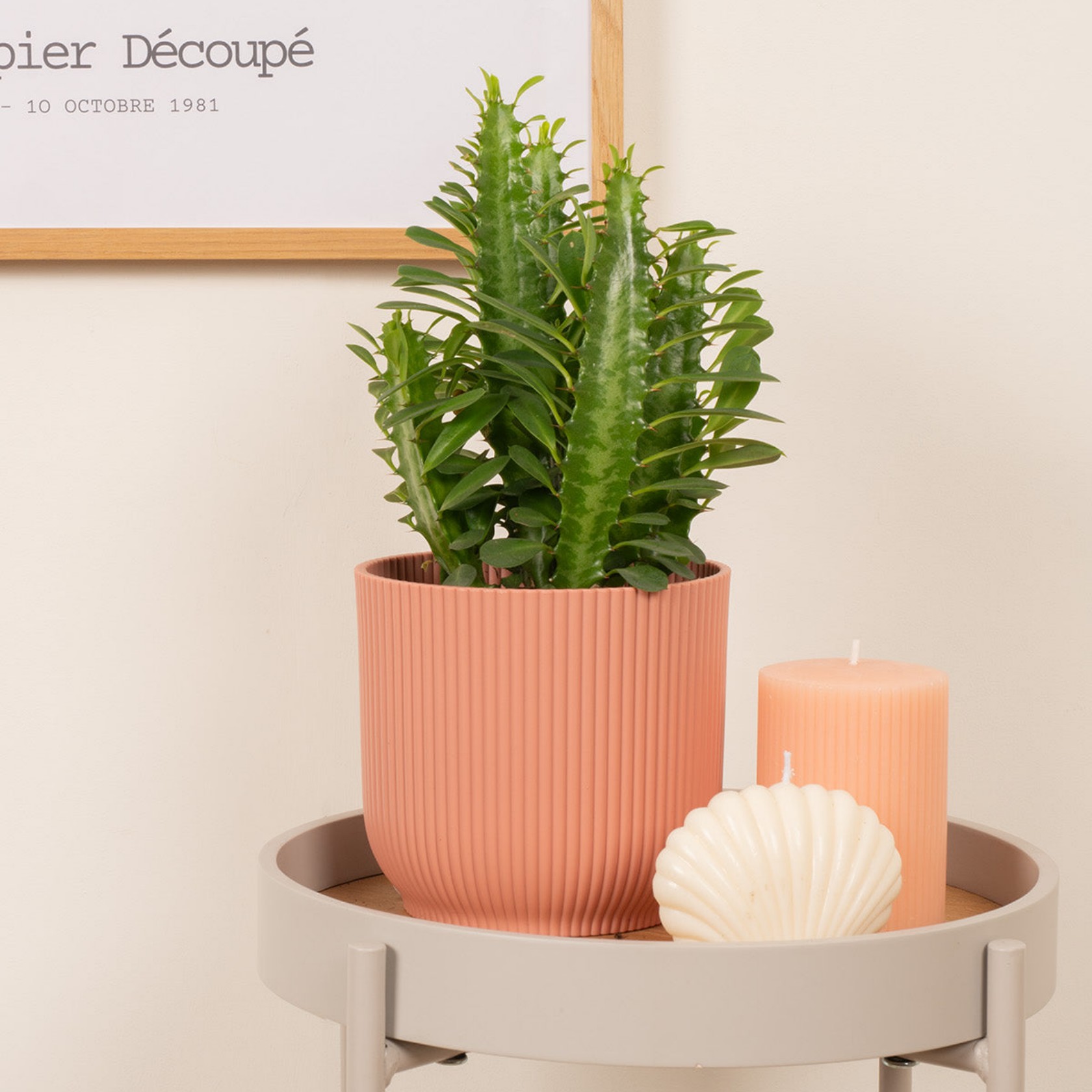
Image courtesy of: Prickle
This eye-catching succulent, requiring minimal attention, includes unique varieties like the Rubra with green and magenta hues. Care entails ample direct sunlight, light watering, and adaptability to various soils, but it’s toxic to pets.
10. Christmas Cactus (Schlumbergera)

Image courtesy of: Multipedia
This houseplant, aptly named for its winter blooming, especially around Christmas, thrives with regular watering and enjoys occasional misting during its growing season in the spring. It prefers bright, indirect light and well-draining cacti mix soil.
11. String of Pearls Green (Senecio Rowleyanus)
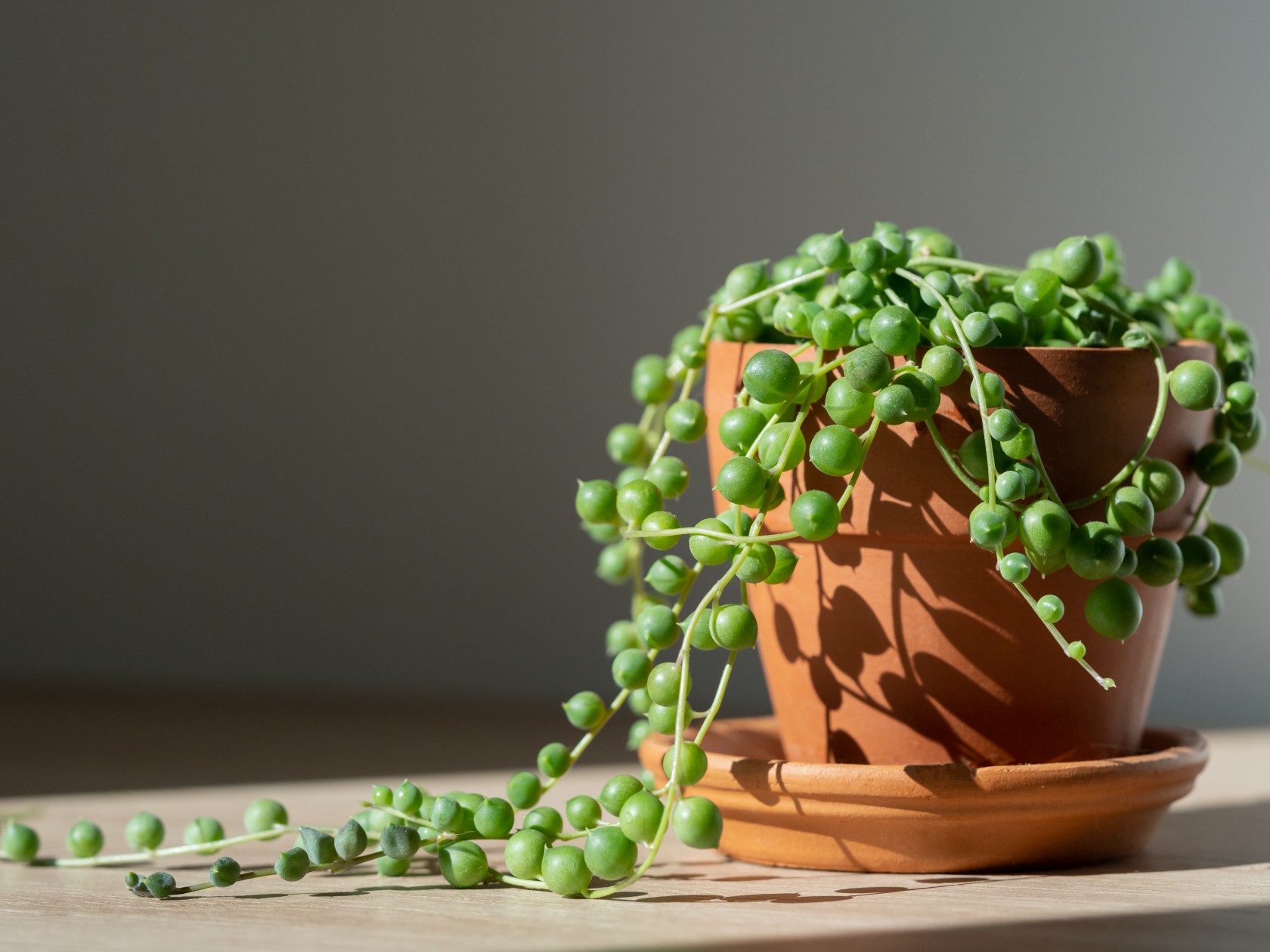
Image courtesy of: varyapigu
The String of Pearls is a unique succulent with long, trailing stems adorned with small, pearl-like leaves. Its cascading growth makes it perfect for hanging baskets or as a trailing accent indoors or outdoors. Easy to care for, it requires bright, indirect light and infrequent watering.
12. Hens-and-Chicks (empervivum tectorum)

Image courtesy of: 30thte
Hens-and-chicks is well-known for its low maintenance and drought tolerance. The “hen” rosette is connected to its “chicks” via delicate roots, thriving in containers or rock gardens. Typically reaching 3 to 6 inches tall and 6 to 12 inches wide, it prefers bright light and well-draining soil, such as cacti or succulent mixes.
13. Echeveria
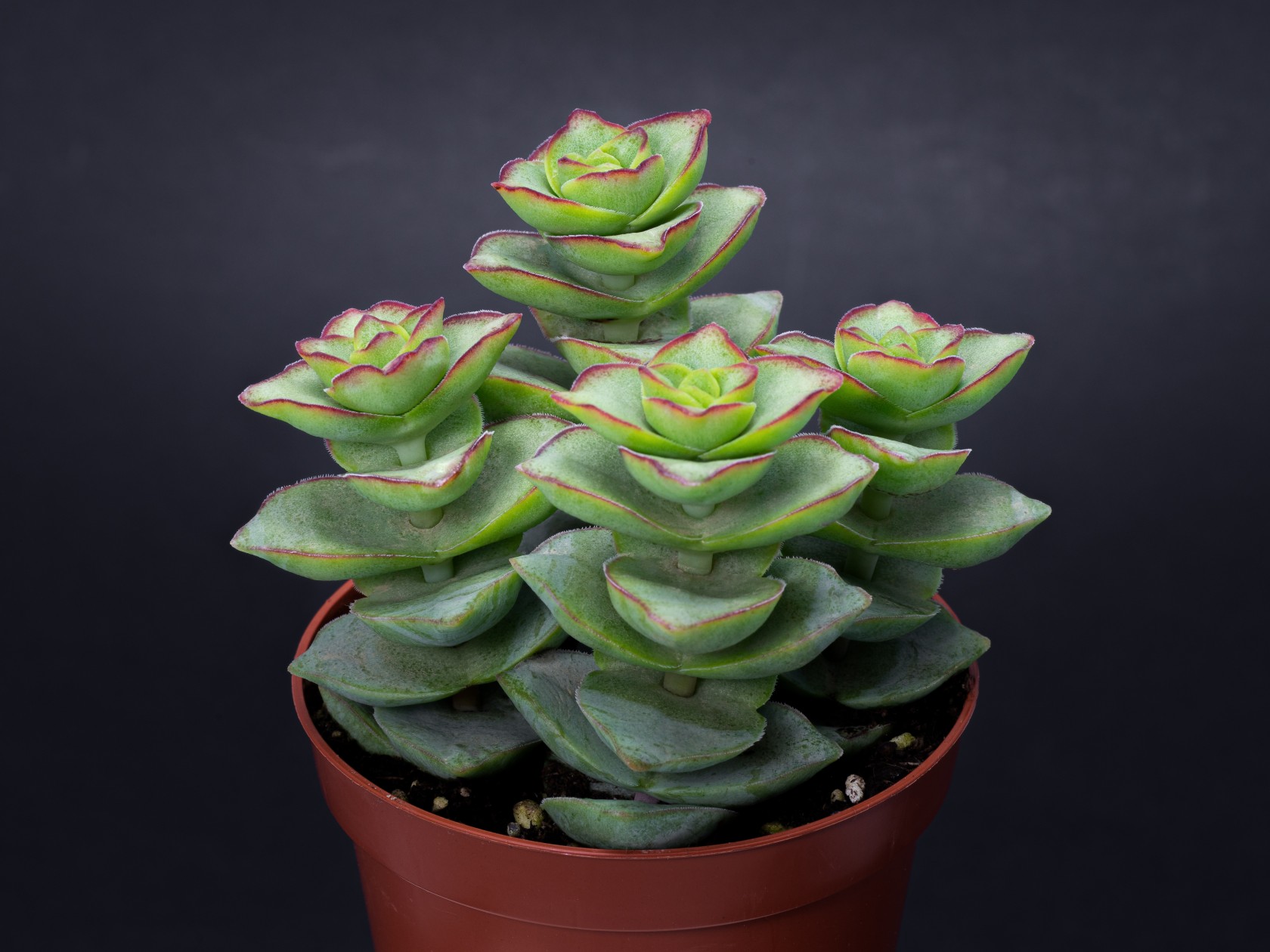
Image courtesy of: lma_stock
Echeveria, with its striking rosettes resembling giant roses, thrives in containers or mixed with other succulents in the ground. It also does well indoors with sufficient bright light and prefers part to full sun exposure.
14. Angelina Stonecrop (Sedum Angelina)
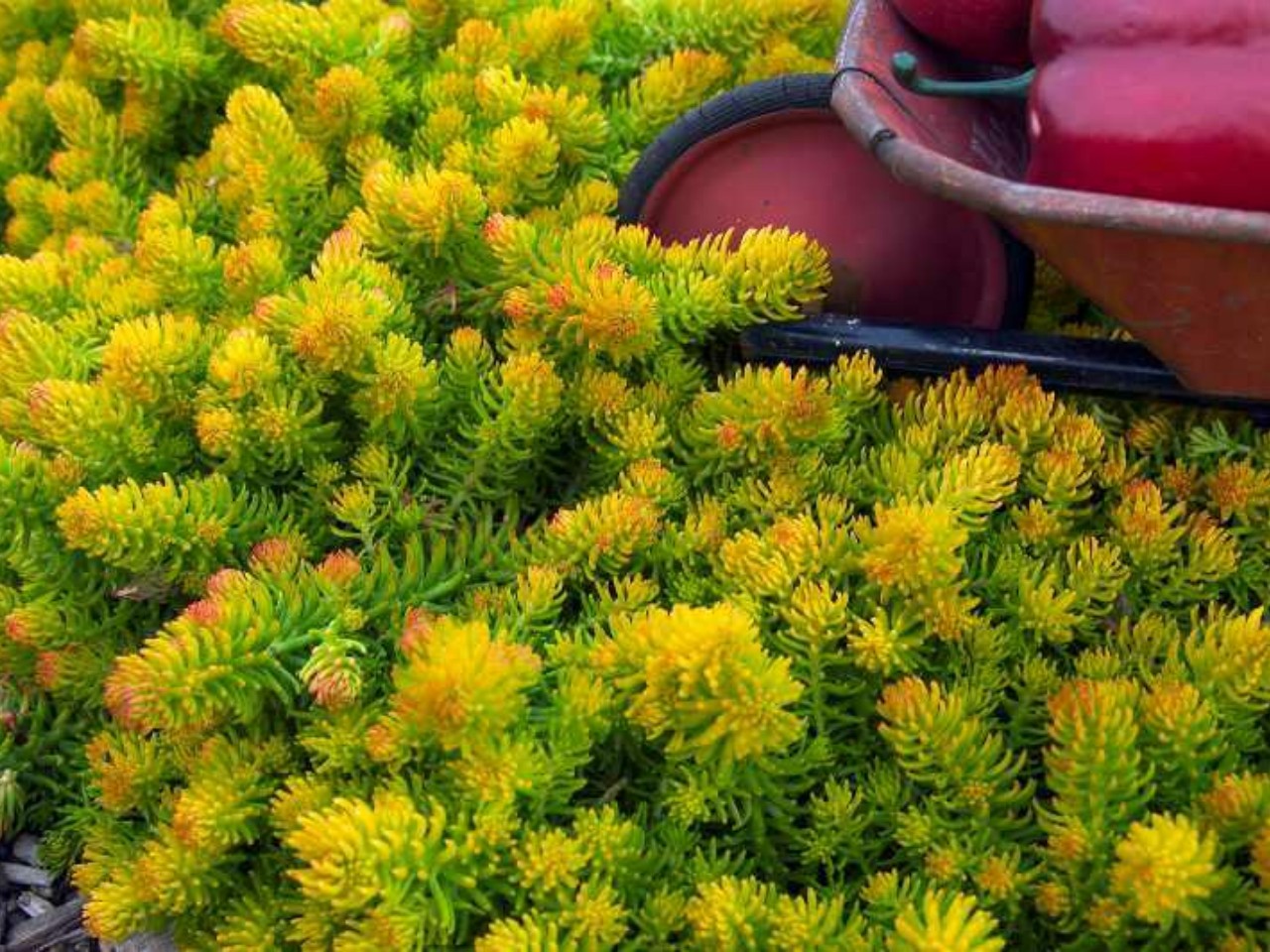
Image courtesy of: Sugar Creek Gardens
The Angelina Stonecrop is an evergreen perennial featuring succulent foliage that creates a dense, low-growing mat. Thriving in rocky or gravelly terrain, it produces small yellow flowers during the summer months. As autumn approaches, its foliage transforms into a warm orange or rust hue.
15. String of Bananas (Senecio radicans)
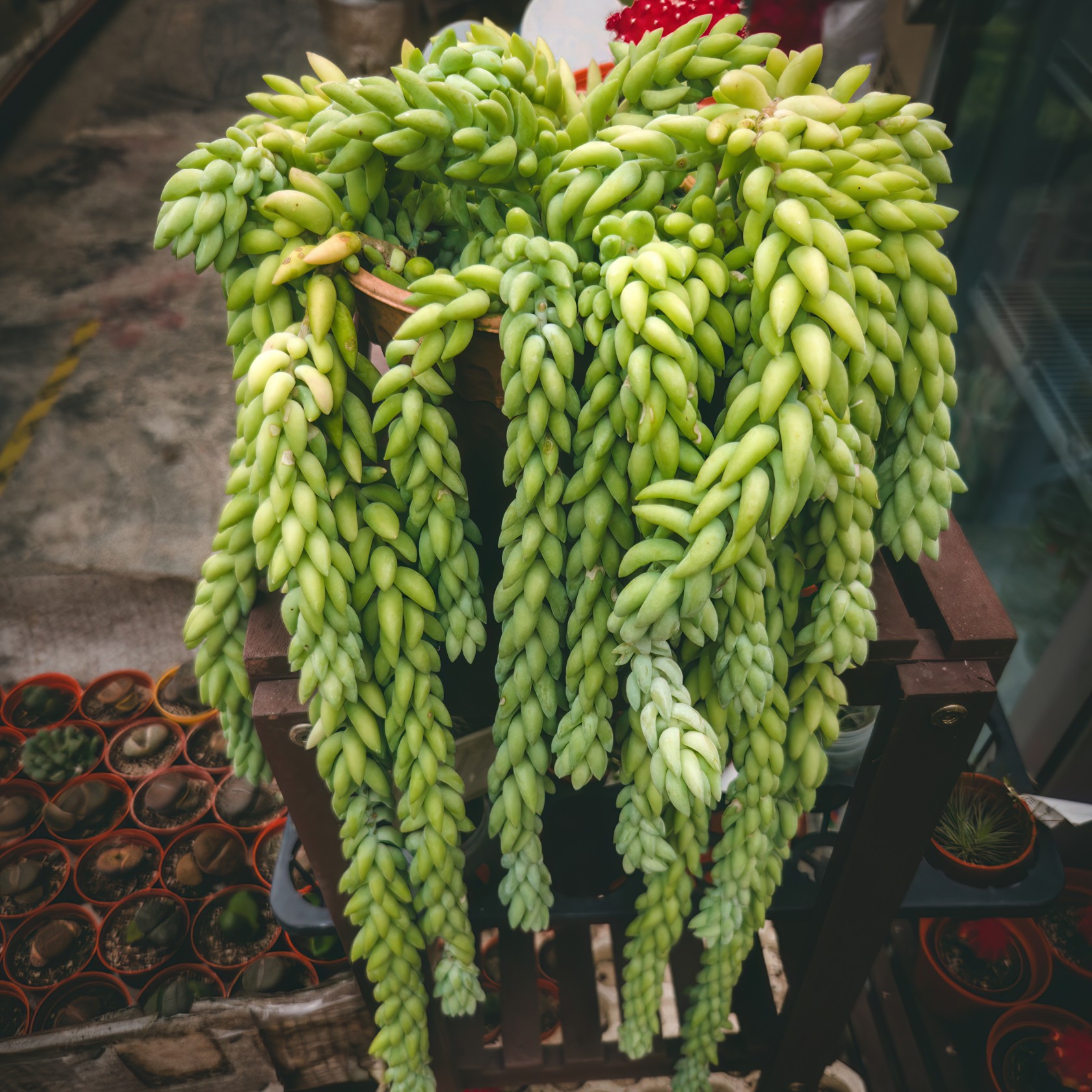
Image courtesy of: ellinnur
The trailing indoor succulent plant features long tendrils of small banana-like leaves, ideal for standalone or mixed plantings. Regular pruning encourages thick, lush growth. It thrives in filtered sunlight and should be watered when the soil is dry to the touch.
16. Ponytail palm (Beaucarnea recurvata)

Image courtesy of: trimarchi_photo
The Ponytail palm, often mistaken for a palm tree but a succulent, is highly prized as one of the most appealing large houseplants. Its distinctive swollen stem base, resembling an elephant’s foot, has earned it the nickname “Elephant Foot Palm.” Thriving in sunny spots or bright indirect sunlight, it’s a low-maintenance plant that thrives on neglect, requiring infrequent watering.
17. Bear Paws (Cotyledon tomentosa)
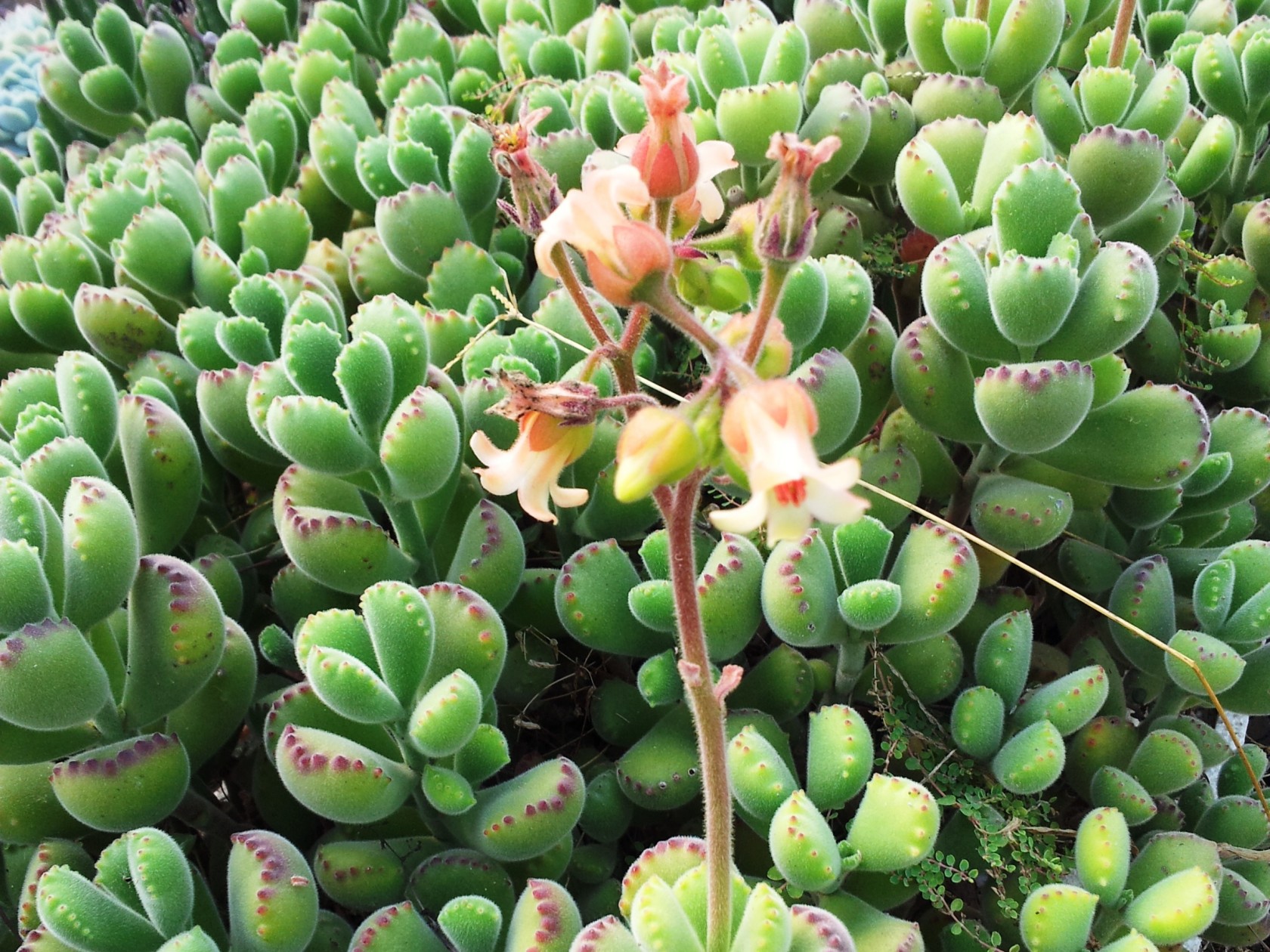
Image courtesy of: Abu Shawka
The bear paw succulent, perfect for indoor gardens, features thick, fuzzy leaves with dark red margins resembling bear claws, and can grow up to 1 foot tall. To care for it, water when the topsoil is 1-2 inches dry and place it in an area with full sun to partial shade for optimal growth.
18. Pinwheel Desert Rose (Aeonium arboreum)

Image courtesy of: nanihta
Also called Black Rose Tree Houseleek, this perennial succulent displays fleshy rosettes in solid colors or variegated hues of green, yellow, white, or red. It thrives in most light conditions, including partial shade, and should be watered when the top 1-2 inches of soil dry out.
19. Moon Cactus (Gymnocalycium mihanovichii)
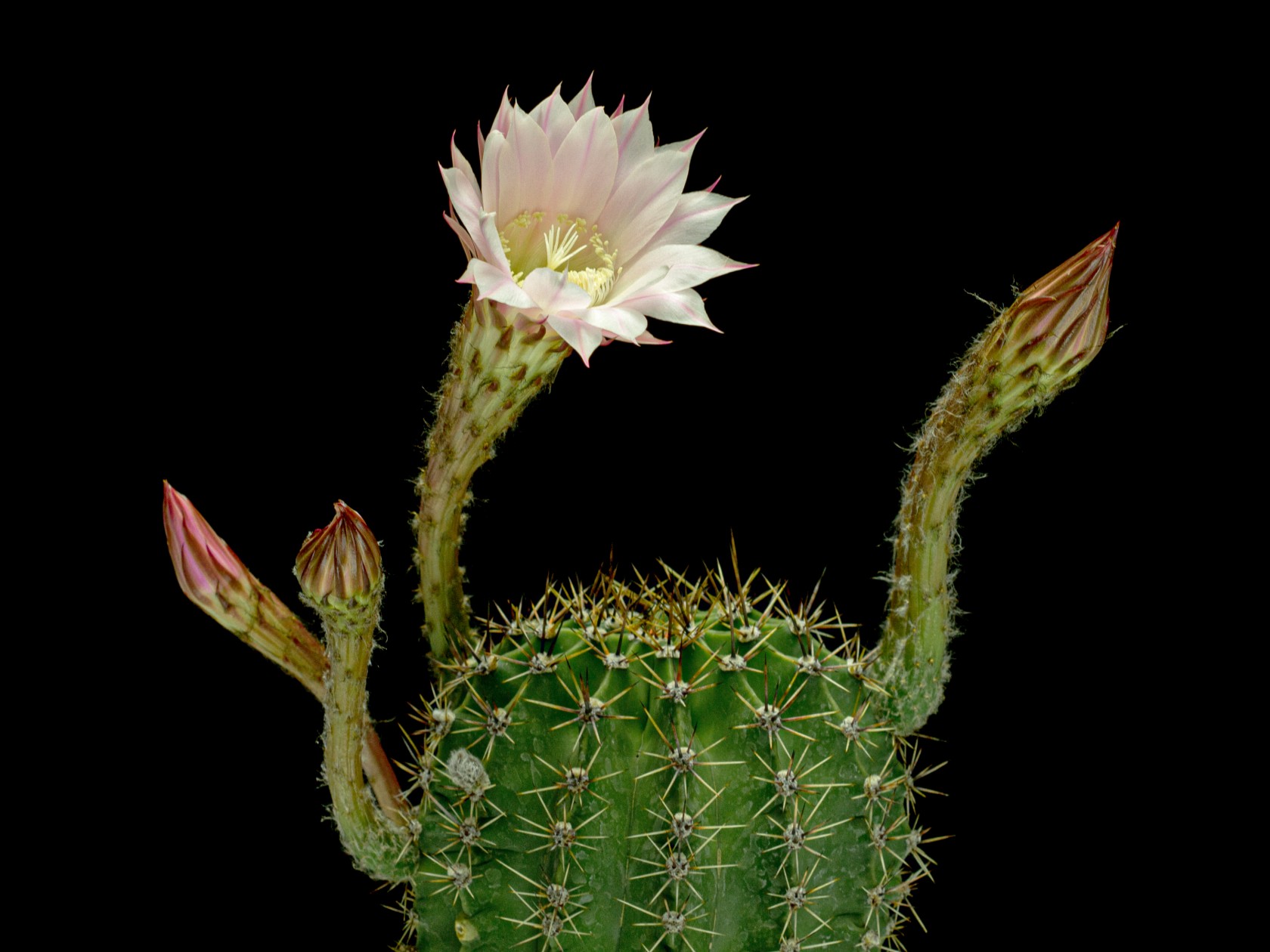
Image courtesy of: kostiuchenko
This striking cactus features bright red, yellow, and orange round tops on a green rootstock. It thrives with a dry period before heavy watering. To ensure optimal growth, place the green rootstock near a bright, indirect, sunny window for plenty of sunlight. While some indirect light is beneficial, limit direct sunlight exposure to no more than 2 hours daily to prevent color fading.
20. Happy Bean (Peperomia ferreyrae)

Image courtesy of: takemewu31
Also known as Pincushion Peperomia, this succulent features bushy, curved leaves and can reach up to 8 inches in height and spread. For best growth, place it in full sun to partial shade and water when the top 1-2 inches of soil are dry.


